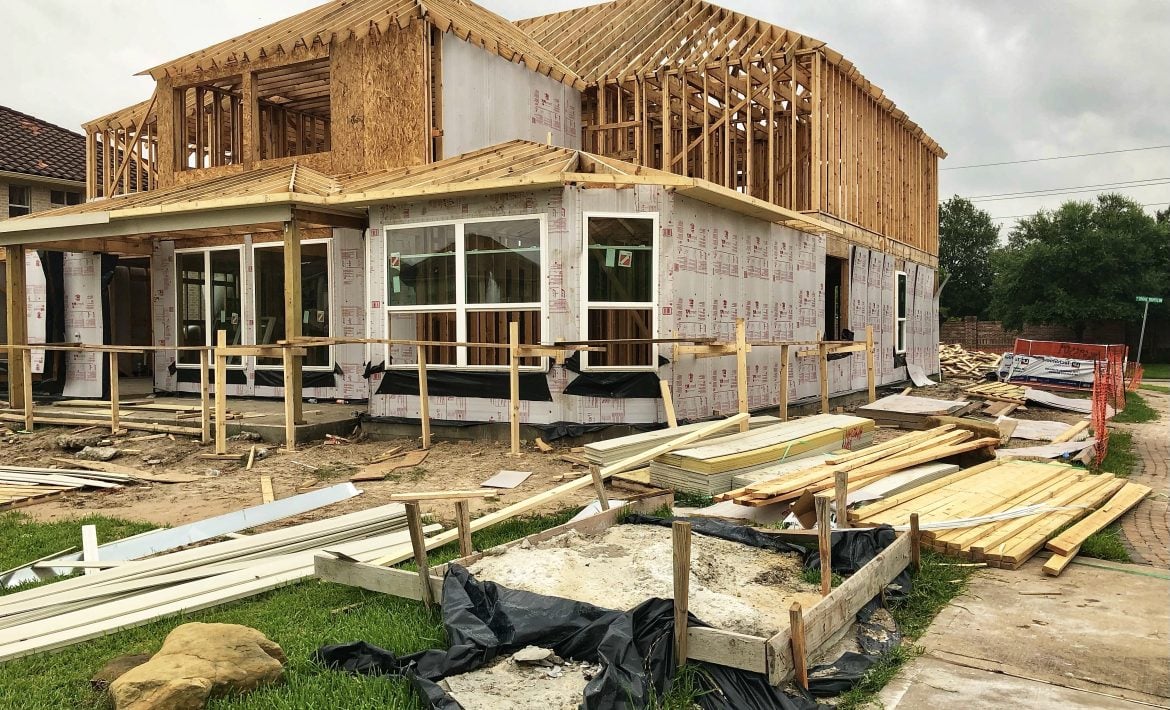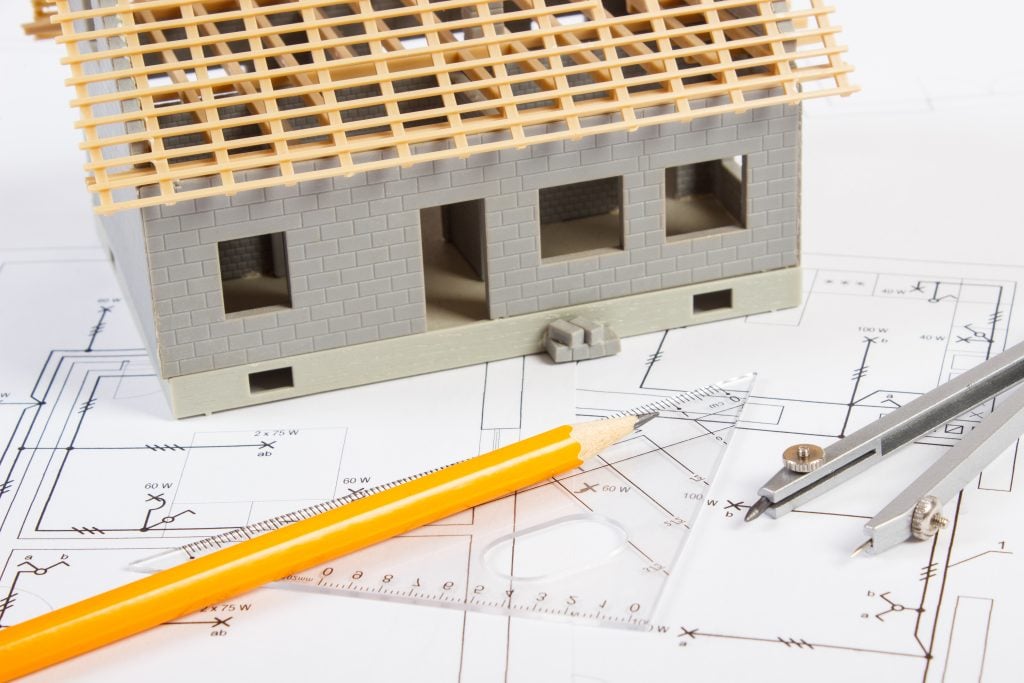

Is a 6m rear extension permitted development? Can you extend your house by 6 metres? How much does a 6 metre extension cost?
These are common questions many homeowners ask when considering expanding their living space.
A 6m rear extension is an excellent way to maximise your home’s potential. However, there are many misconceptions and regulations to consider.
Firstly, let’s clarify what a 6m rear extension is. Essentially, it’s an extension that stretches six metres from the rear of your house.
Many believe such projects are always permitted developments, but this is not always the case. In the UK, building regulations and planning permissions play a crucial role.
To clarify, permitted development rights allow homeowners to extend their properties without needing full planning permission, but certain conditions must be met.
For instance:
- Your house must be detached.
- The extension must not cover more than half the area of land around the original house.
- It must be single-storey and not exceed four metres in height.
The benefits of a 6m rear extension are numerous. Not only does it provide additional living space, but it can also significantly increase the value of your property.
When designed and executed well, it offers a seamless blend of functionality and aesthetic appeal.
However, achieving the best results requires professional input. Consulting an architect experienced in 6m rear extensions is essential.
They ensure your design meets all regulations and optimises your space. Additionally, hiring skilled builders guarantees quality workmanship.
Failing to comply with regulations can lead to issues such as enforcement notices, fines, or even having to demolish the extension. Thus, understanding and following the guidelines is crucial.
In this article, we will delve into every aspect of a 6m rear extension. From planning and design to construction and compliance, we’ll cover everything you need to know to achieve the best outcomes.
What Are The Benefits Of A 6m Rear Extension And Importance Of Maximizing Home Space

A 6m rear extension offers an excellent way to expand and enhance your home.
Whether you need more living space, wish to modernise your property, or simply want to add value, this type of extension can provide numerous benefits.
Let’s explore eight key advantages of a 6m rear extension and why maximising your home space is essential for UK homeowners.
1. Increased Living Space
One of the primary benefits of a 6m rear extension is the increased living space it provides.
By extending your home, you can create an open-plan kitchen, a spacious dining area, or a comfortable family room. This additional space can significantly enhance your daily life.
- More room for furniture and decor
- Greater flexibility in how you use your home
- Opportunity to create multi-functional spaces
Maximising your living space means more room for activities and entertaining guests. Moreover, a larger living area can improve the flow of your home, making it feel more connected and harmonious.
2. Enhanced Property Value
A well-designed 6m rear extension can significantly increase the value of your property. In the UK, homes with extra living space are highly sought after.
Potential buyers often prioritise properties with ample space and modern amenities.
- Higher resale value
- Attracting more potential buyers
- Faster property sales
Investing in a rear extension is not just about improving your current living conditions. It’s also a strategic financial move. When it’s time to sell, your property will stand out in the market, potentially fetching a higher price.
3. Improved Functionality
With a 6m rear extension, you can dramatically improve the functionality of your home.
Whether you need a larger kitchen, an additional bedroom, or a home office, the extra space allows you to tailor your home to your specific needs.
- Customisable spaces to suit your lifestyle
- Enhanced layout and design
- Better utilisation of existing space
Functional improvements make everyday tasks easier and more enjoyable. Additionally, a more efficient home layout can reduce clutter and create a more organised living environment.

4. Modernisation of Your Home
A rear extension is an excellent opportunity to modernise your home. You can incorporate contemporary design elements, energy-efficient technologies, and high-quality materials.
This can transform your home into a stylish and comfortable living space.
- Incorporation of modern design trends
- Installation of energy-efficient systems
- Use of sustainable materials
Modernising your home not only enhances its aesthetic appeal but also improves its energy efficiency. This can lead to lower utility bills and a more sustainable living environment.
5. Better Natural Light
Extending your home can also improve natural light. By adding large windows, skylights, or bi-fold doors, you can brighten up your living space and create a more inviting atmosphere.
- Increased exposure to natural light
- Reduced need for artificial lighting
- Enhanced mood and well-being
Natural light can make your home feel more spacious and airy. Furthermore, it has numerous health benefits, including boosting your mood and energy levels.
6. Seamless Indoor-Outdoor Living
A 6m rear extension can create a seamless transition between indoor and outdoor living spaces.
By incorporating features like bi-fold doors or large patio doors, you can easily access your garden or patio area.
- Easy access to outdoor spaces
- Improved flow between indoor and outdoor areas
- Enhanced outdoor entertaining options
Seamless indoor-outdoor living is perfect for entertaining guests and enjoying the outdoors. It also makes your home feel more spacious and connected to nature.
7. Personalisation and Customisation
A rear extension offers the chance to personalise and customise your home to reflect your style and preferences. You can choose the layout, design, and finishes that best suit your taste and lifestyle.
- Custom design options
- Choice of materials and finishes
- Personalised touches and features
Personalisation ensures that your home is a true reflection of your personality. It also allows you to create a space that meets your unique needs and preferences.
8. Future-Proofing Your Home
Finally, a 6m rear extension can future-proof your home. As your needs change over time, the additional space can be adapted to suit different purposes, such as a home office, a guest room, or a play area for children.
- Adaptable spaces for changing needs
- Increased longevity of your home’s functionality
- Enhanced resale value over time
Future-proofing your home ensures that it remains functional and relevant for years to come. It’s a smart investment that can adapt to your family’s evolving needs and lifestyle.
Understanding Planning Permissions

Before embarking on a 6m rear extension, understanding planning permissions in the UK is crucial.
Planning permissions are legal requirements ensuring that extensions and renovations comply with local building regulations and environmental standards.
They help maintain the character of neighbourhoods and protect the interests of the community.
Permitted development rights allow certain types of extensions without the need for full planning permission. For a 6m rear extension, these rights often apply, but specific conditions must be met:
- The house must be detached.
- The extension must not exceed six metres in depth from the original rear wall.
- It must not cover more than half the area of land around the original house.
- The height must not exceed four metres.
When and how should you apply for planning permission? If your extension does not fall within permitted development rights, you must apply for planning permission from your local council.
This involves submitting detailed plans and drawings of the proposed extension, along with any relevant documents.
To increase your chances of approval:
- Consult with an experienced architect.
- Ensure your plans comply with local building regulations.
- Engage with neighbours to address any concerns.
By carefully following these steps and understanding the intricacies of planning permissions, you can ensure a smoother, more successful extension project.
Designing Your 6m Rear Extension

Designing a 6m rear extension requires careful planning and consideration. Several key factors must be taken into account to ensure the extension meets your needs and enhances your home.
First, consider functionality and purpose.
Think about how you will use the space.
Will it be a kitchen, dining area, or family room?
The design should reflect its intended use, providing practical and efficient solutions.
- Identify the primary function of the space
Determine whether the extension will be used for cooking, dining, relaxing, or a combination of these activities.
- Plan for adequate storage and seating
Incorporate built-in storage solutions and plan the layout to accommodate seating arrangements that suit your lifestyle.
- Ensure the layout promotes ease of movement
Design a floor plan that allows for smooth navigation between different areas, avoiding cluttered or awkward spaces.
Next, focus on aesthetic appeal.
The extension should not only be functional but also visually pleasing. Choose materials, colours, and finishes that complement your home’s style.
- Select a cohesive colour scheme
Use a consistent palette that harmonises with the existing decor, creating a unified look.
- Use quality materials for a polished look
Invest in high-quality finishes such as hardwood floors, stone countertops, and bespoke cabinetry for a sophisticated appearance.
- Incorporate design elements that add character
Consider features like exposed beams, statement lighting, or decorative mouldings to give the space a unique personality.
Integration with the existing structure is also crucial. The extension should blend seamlessly with your home, appearing as a natural addition rather than an afterthought.
- Match the roofline and exterior materials: Ensure the extension’s roof and external walls use similar materials and styles to the main house.
- Align windows and doors with existing ones: Position new openings in line with the original structure to maintain visual continuity.
- Ensure structural integrity: Work with a structural engineer to ensure the extension is safe and stable, considering factors like load-bearing walls and foundations.
Working with an architect or designer can greatly benefit your project.
They bring expertise and creativity, helping you navigate design challenges and regulatory requirements. They will also ensure that your vision is realised efficiently and effectively.
- Hire a professional with experience in rear extensions: Choose an architect or designer who has a proven track record with similar projects.
- Collaborate on design ideas and solutions: Engage in discussions with your designer to explore various options and refine your vision.
- Ensure compliance with building regulations: Your architect will help you meet all necessary legal requirements, ensuring the extension is safe and lawful.
Finally, consider popular design trends for rear extensions

When designing a 6m rear extension, incorporating popular design trends can enhance both the functionality and aesthetic appeal of your new space.
Here are five key trends to consider:
- Open-Plan Layouts for a Spacious Feel
Open-plan layouts have become increasingly popular for rear extensions, as they create a sense of space and versatility.
By removing internal walls, you can combine different areas such as the kitchen, dining room, and living room into one large, continuous space.
- Seamless flow: Encourage easy movement between cooking, dining, and relaxing areas.
- Flexible use: Adapt the space for various activities like entertaining guests, family gatherings, or daily chores.
- Enhanced natural light: Open-plan layouts allow light to travel freely, making the space feel brighter and more inviting.
- Bi-Fold or Sliding Doors to Connect Indoor and Outdoor Spaces
Connecting your extension to the garden or patio with bi-fold or sliding doors is a trend that brings the outdoors in, creating a seamless transition between indoor and outdoor living areas.
- Maximised views: Large glass panels offer unobstructed views of your garden, adding to the aesthetic appeal.
- Increased natural light: Floor-to-ceiling glass doors flood the interior with sunlight.
- Versatile openings: Bi-fold doors can be fully opened to extend your living space into the garden, perfect for summer gatherings.
- Skylights and Large Windows for Natural Light
Natural light enhances the atmosphere of any space, and incorporating skylights and large windows is an effective way to achieve this in your rear extension.
- Roof windows: Install skylights or roof lanterns to bring sunlight directly into the centre of the room.
- Full-height windows: Use large, floor-to-ceiling windows to create a bright, airy environment.
- Energy efficiency: Modern glazing options improve insulation while maximising light, helping to reduce energy costs.
You can also consider:
- Minimalist Designs with Clean Lines
Minimalist design continues to be a favourite for its sleek, modern look. Clean lines, simple forms, and uncluttered spaces are key elements of this trend.
- Neutral colour palettes: Opt for whites, greys, and natural tones to create a calm, serene atmosphere.
- Streamlined furniture: Choose furniture with simple, elegant designs that complement the minimalist aesthetic.
- Functional decor: Focus on practicality with built-in storage solutions to keep the space tidy and organised.
- Sustainable Materials and Energy-Efficient Features
Sustainability is an important consideration for modern home extensions.
Incorporating eco-friendly materials and energy-efficient technologies can make your extension both stylish and environmentally responsible.
- Sustainable materials: Use recycled, reclaimed, or sustainably sourced materials for construction and finishes.
- Energy-efficient systems: Install solar panels, energy-efficient glazing, and underfloor heating to reduce your carbon footprint.
- Green roofs: Consider a living roof with plants and grasses, which provides insulation, absorbs rainwater, and enhances biodiversity.
Budgeting and Financing
When planning a 6m rear extension in the UK, budgeting and financing are crucial aspects to consider. Understanding the costs involved and how to manage them effectively can ensure your project stays on track.
Estimating the Cost of a 6m Rear Extension
Firstly, it’s essential to estimate the overall cost of your extension. Costs can vary depending on factors such as location, materials used, and the complexity of the design.
- Materials: Include costs for structural materials, flooring, windows, and doors.
- Labour: Factor in expenses for builders, contractors, and tradespeople.
- Permits: Budget for planning permission fees and any other necessary approvals.
Breakdown of Expenses
To manage your budget effectively, break down expenses into categories:
- Materials: Allocate funds for high-quality materials that meet building regulations.
- Labour: Estimate costs for skilled workers and construction professionals.
- Permits: Budget for application fees and associated costs for planning permission.
3 Tips for Staying Within Budget
Staying within your budget requires careful planning and financial discipline:
- Get multiple quotes: Compare quotes from different builders and suppliers to find competitive prices.
- Plan for contingencies: Set aside a contingency fund to cover unexpected expenses or changes to the project.
- Prioritise essentials: Focus spending on essential elements of the extension first, then consider optional extras if budget allows.
By estimating costs accurately, breaking down expenses, and following these budgeting tips, you can ensure your 6m rear extension project remains financially manageable and successful.
The Main Problem with the Larger Residentials Extension Process.
First, It’s a great opportunity to get that extra meter to make all the difference with large stamp duties making moving a harder challenge.
Second, if you can crack these few complexities then it’s a great advantage for your home, creating much-needed living space and future value.
A big issue that pops up, again and again, is when a larger rear extension is used to get more space (up to 6m on a semi-detached) and is combined with a normal householder planning application.
So this may be a 6m rear extension and trying to do a side extension that wraps around into the larger residential extension. So, how do you get your best 6m rear extension?
What do Local Councils think?
Councils find it hard to know if this is lawful. In permitted development, the larger residential process falls is quite black and white and rule-based.
So when other elements touch it, it can create these complications.
So Councils are pragmatic about combining applications, while others are actively blocking them. Harrow Council is historically difficult in these matters for example.
In St Albans, we have successfully submitted hip to gable loft extensions, typically a permitted development application as a householder application. This would not be possible in Harrow for example.
Also in St Albans, we have combined larger and normal applications after each individual application is approved to combine them.
St Albans will approve all of it as long as it is sensible. So you can get your best 6m rear extension sometimes.
Can Neighbours Block My 6m Rear Extension?
The next main problem we encounter is the neighbour issue.
We always advise you to seek agreement from your immediate neighbours. The Council will write to them to make sure they have no objections.
If you do get an objection, you can still get a larger residential extension. This is the top tip!
As long as the application does not prejudice your neighbour’s amenities.
This means extending adjacent to the objecting neighbour by no more than 3m or what a normal extension may be or contextually what is agreeable normally at planning. A full larger residential extension can be achieved on the other side.
Final Top Tip for a 6m Rear Extension
Learning the key things to note when planning a 6m rear extension, including how to navigate the approval process and avoid common pitfalls.
If you need to get your best 6m rear extension and more, then it is possible. You just need a good architect that understands how to put things together.
Maybe there is an easier way, read this for an alternative.
For more advice on getting the best for your house, call Gordon on 02089546291
Further reading on Planning Portal

